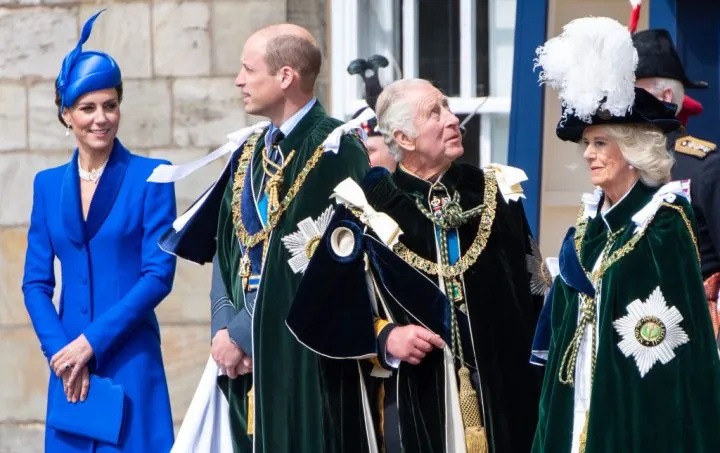It was a detail that most novelists or screenwriters would have rejected as being too much. Shortly after yesterday’s announcement that the Princess of Wales will be hospitalized for up to two weeks after abdominal surgery at the London Clinic, a second proclamation was made. We learned that King Charles is to attend hospital next week for treatment of an enlarged prostate.
One day, two senior British royals, two health conditions. Yet what makes the events newsworthy beyond mere gossip and speculation are the differences — and similarities — in how the stories have made it into the public domain.
Most well-wishers will be grateful for the relative candor with which their conditions have been revealed
Traditionally, the British royal family’s health issues have been publicized, when they have been at all, with a mixture of euphemism, opacity and downright falsehood. When George VI, a lifelong heavy smoker, was diagnosed with lung cancer, not only were his subjects not informed about it, but the King himself was not told the truth about the seriousness of his condition, allowing him to remain in ignorance until he died of a separate cause. This sense of family health being a private matter lasted throughout the reign of his daughter Elizabeth II: Princess Margaret’s declining health was barely mentioned in public in the last years of her life. Even the late Queen’s final illness was handled in a secretive fashion that meant, on the day she died, well-informed journalists knew the news before some of her family did.
In the case of the Princess of Wales and the king, there seems to be no immediate cause for concern. Yet it’s also a tale of two press releases. The initial statement put out about Catherine’s health from Kensington Palace was both unexpected and vague, causing widespread confusion and alarm amongst the millions of well-wishers that the Princess has both in Britain and overseas. After all, it is not normal for an apparently healthy forty-one-year-old woman to be admitted to hospital and for it to be stated that she will need at least until Easter to recuperate.
The line in the statement that “Kensington Palace will, therefore, only provide updates on Her Royal Highness’s progress when there is significant new information to share” sounded more ominous than perhaps it was meant to. A secondary clarification, that the surgery had not been for cancer, was swiftly made, and welcome, but the refusal to be more explicit about the cause of her indisposition has inevitably given rise to widespread speculation. This will presumably last until either a further statement is made or the princess resumes royal duties.
Compare this to the statement made by Buckingham Palace a couple of hours later and the difference between unnecessary confusion and welcome clarity becomes obvious. It was a terse few lines, saying that “in common with thousands of men each year, the King has sought treatment for an enlarged prostate. His Majesty’s condition is benign and he will attend hospital next week for a corrective procedure. The King’s public engagements will be postponed for a short period of recuperation.”
The statement was also a masterclass in conveying relevant information with brevity. In less than fifty words, it was explicit about Charles’s condition, making the tacit point that men of his age are liable to suffer from enlarged prostates and should be examined in case they need a similar procedure. It also stated what will be done and when he will resume royal duties. There has, therefore, not been any further speculation about his condition.
Some may find a certain element of humor in the details of the headlines today — the story that Prince William will have to do more childcare given his wife’s indisposition is hardly newsworthy, given the amount of domestic assistance that he can undoubtedly call upon. Yet most people will hope for the rapid recovery of two of the more popular members of the royal family, and be grateful for the relative candor with which the British royals’ conditions have been revealed to their subjects — even if the Kensington Palace statement suggests that we are still a considerable way from full disclosure when it comes to the health issues of British royalty.
This article was originally published on The Spectator’s UK website.





















